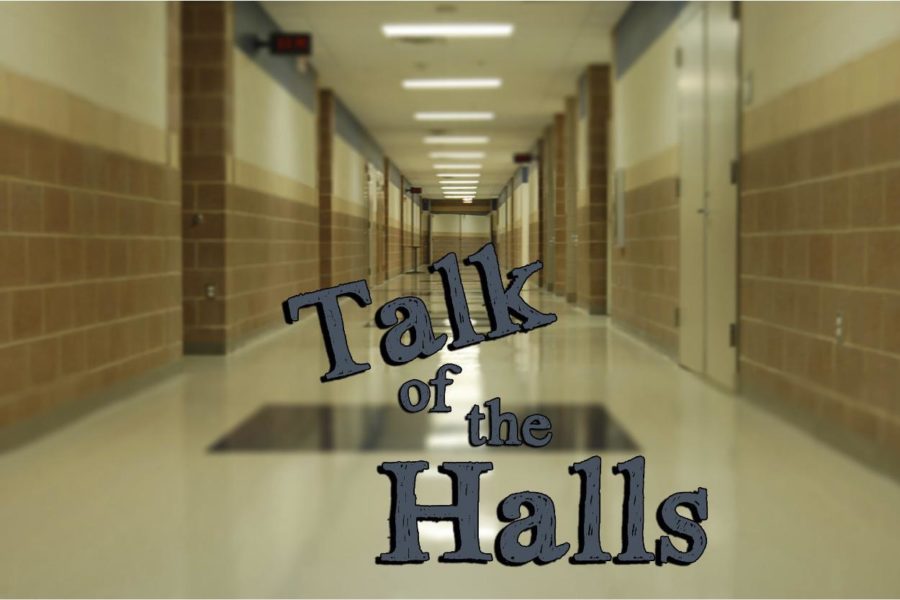Rid the ranking system
September 16, 2013
Get rid of the class ranking system at this school. I’m not saying this because I’m bitter about my own rank or anything like that. Honestly, for our situation, it’s pointless and even harmful.
First off, in today’s day and age, class rank is surprisingly not as important as it has been in past years. In 1993, 42 percent of universities surveyed rated rank as one of the most important factors in their admission decision, while in 2010, that number went down to 22 percent.
In a presentation entitled “Class Rank: Will it Disappear Soon?” at the annual ACT State Organization Conference in Illinois, college admissions expert Lisa Michele voiced her support of not using class or percentile ranking is generally a good idea for schools with high average test scores and a relatively small student body (cough… Lovejoy). Currently, class rank is in practice at only 46 percent of American high schools, meaning that class rank is on the path to becoming obsolete.
Class rank, in theory, is designed to encourage students to challenge themselves academically, take difficult classes, and get the highest possible scores in each class. However, Lovejoy students are anything but slackers. Most students are taking several AP classes and the school doesn’t have a huge problem with underachievers. Honestly, we’re a school of overachievers.
We are top athletes, top students, top artists. We like to challenge ourselves because we like to do our best, and we don’t need class rank to be encouraged to do our best academically. Even a more reasonable ranking system, such as reporting quartiles versus specific ranks, would be enough competition to provide encouragement for students to do well.
Rank also keeps students from challenging themselves academically. In the past, high-ranking students have not taken AP World History in favor of taking Pre-AP World History, where they would receive an easy A. Rather than reward students for their effort in a difficult class, many students saw their rank go down after taking WHAP.
Theoretically, class rank is an indicator of a student’s academic performance in comparison to his or her peers. Theoretically.
In reality, class rank is incredibly subjective: Did the student have to work
after school? Is the student involved in a time-consuming extracurricular activity? Test scores such as the SAT and ACT provide a far more objective view at a student’s academic abilities. Class rank is dependent on intelligence, work ethic, and academic potential, but there are many extraneous factors involved in the rank as well.
One factor that affects class rank that students have no control over is the size of the graduating class. In my graduating class, 2014, there were 292 students when we were first ranked. According to the last reports, that number had dropped to 274. That means that two students just got kicked out of the top ten percent, and things just got even more competitive for students in those top rankings.
I hope that the school administration considers the possibility of banning the practice of class rank, not just for the sake of our college applications, but for the sake of our sanity.




Anonymous • Oct 8, 2013 at 12:22 pm
The only people who want to get rid of class rank are those who are not satisfied with their own. Class rank is an effective way of measuring where you stand academically in your school. It may not be a perfect system, but it does its job.
Anonymous • Sep 24, 2013 at 8:20 pm
Class ranks should be kept. It is a reward for the kids who work hard. Some kids work really hard because they enjoy competing. This is where their hard work pays off. I’m sure everyone is curious to know how well they’re doing compared to their peers. If they aren’t satisfied with their rank, it is a sign that they should work harder.
student • Sep 22, 2013 at 10:37 pm
Class rank is supposed to give an overall view of where students fall in their school. The students who are most disadvantaged by class rank are those at the exclusive private schools with admissions processes as stringent as the top universities’. That is the main audience Ms. Michele is referencing when she says “not using class or percentile ranking is generally a good idea for schools with high average test scores and a relatively small student body”…..not schools like Lovejoy. Lovejoy is a fantastic public school, but in the scheme of things really not that different from Plano or Allen or Wylie except for the sense of entitlement. This is coming across very strongly in the article, the line “Honestly, we’re a school of overachievers” sums it up nicely.
At the end of the day, the exceptional students stand out and succeed whether or not their class rank is reported. And in any case, the top 10% will always be ranked as long as the UT admissions system remains in place. Maybe students should focus less on their class rank and more on their homework.
Anonymous • Sep 17, 2013 at 3:19 pm
yes